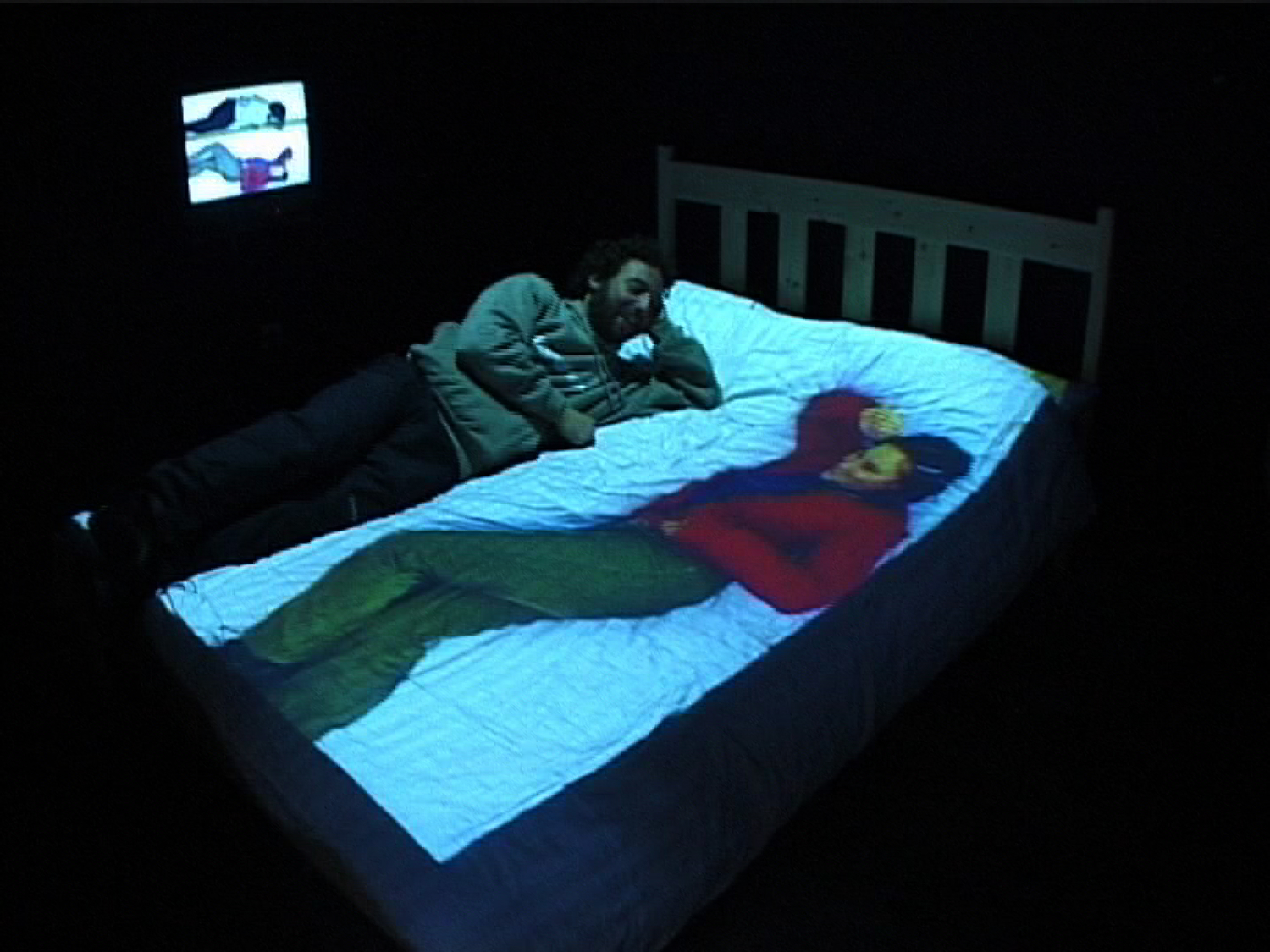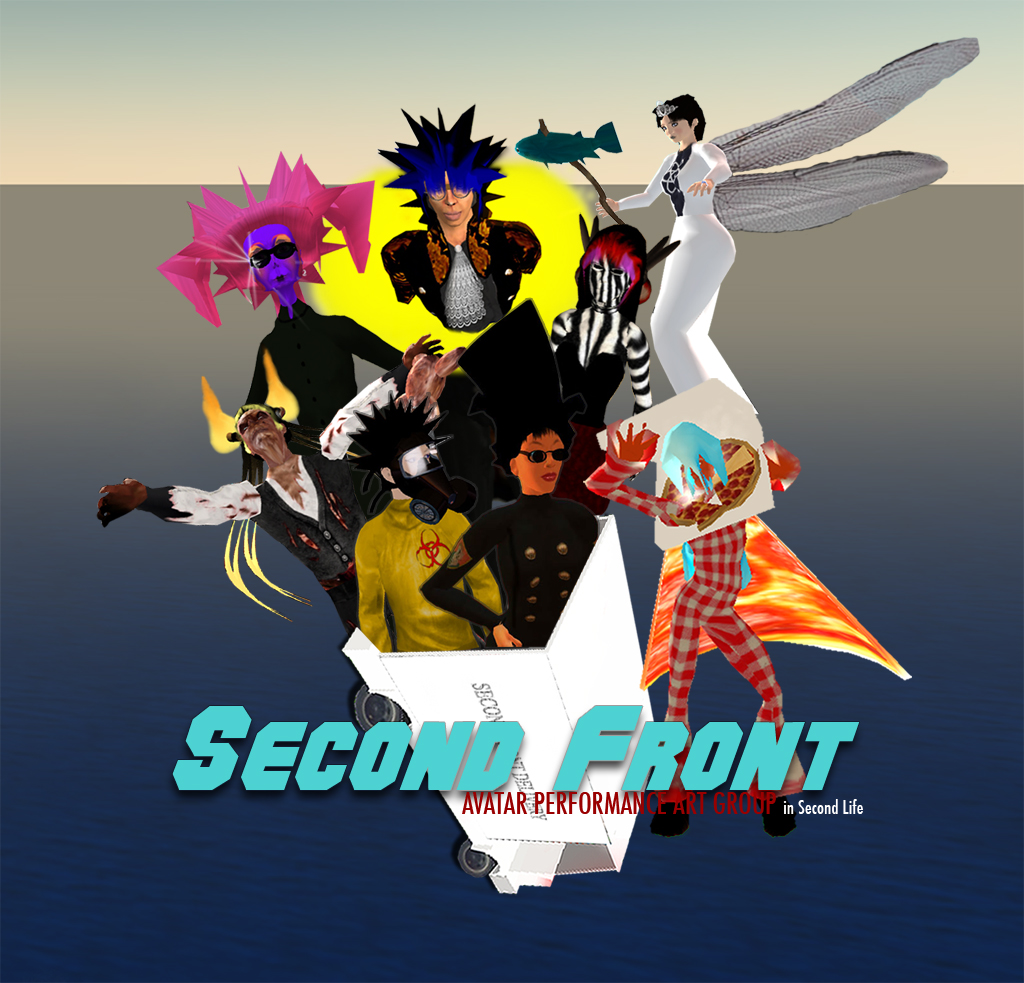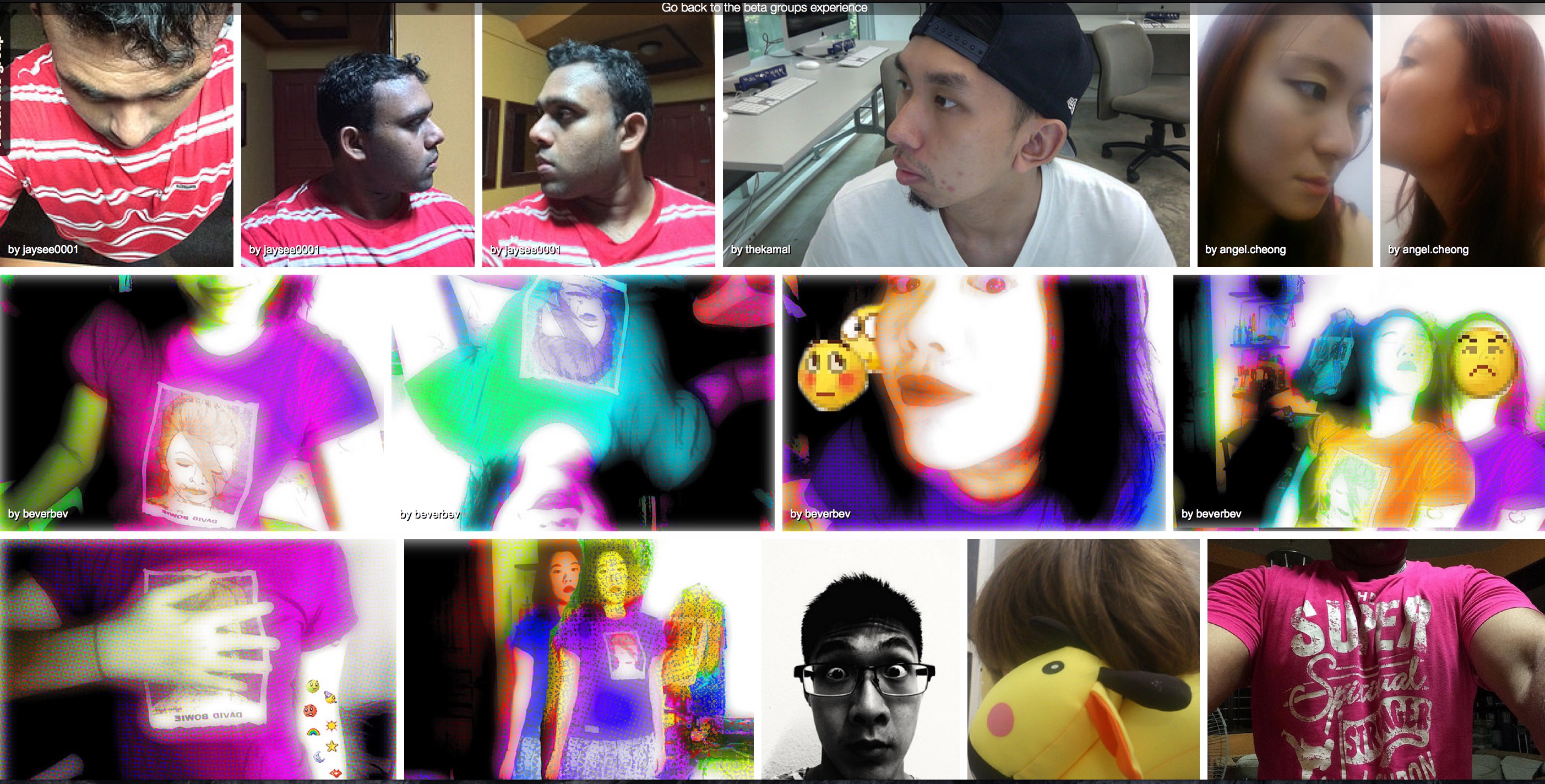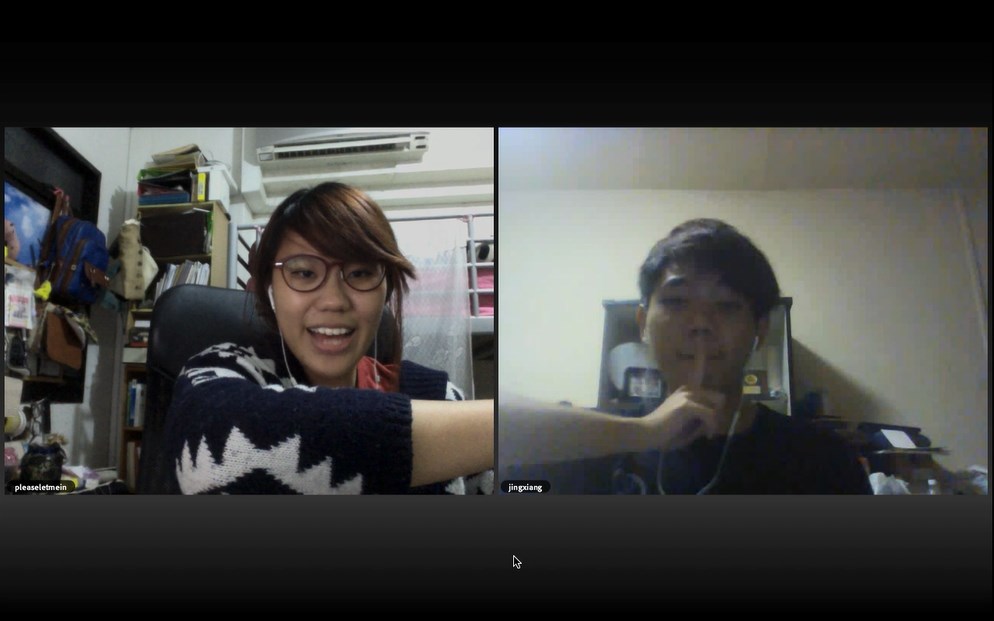The Third Space
Description
Week 5: September 10 – 16
The third space is defined as a shared electronic space with remote participants connected via the network: a concept fundamental to this course. We will explore the psychological and conceptual dimensions of the third space, notions of distributed presence, the dissolution of the object, disembodiment, the immaterial, and the intimacy of the telematic embrace. We will discuss third space forms of collective experience via the network through live media, remote location, mobility, transformations of geographical perception in time and space, and how the third space lends itself to artistic realization. Location: Adobe Connect
Assignments
Due Next Week: September 17
1 – Reading
Menkman, R. (2011) “Glitch Moment(um),” Institute of Network Cultures
Read Introduction (7-9), Manifesto (11), Vernacular of File Formats (17-25)
Rosa Menkman will be our guest artist next week, so be prepared to discuss the essay in class with the artist and incorporate into the WordPress assignment below.
2 – Research Critique: Glitch Aesthetics
You will be assigned an artwork to research for a short 250 word hyperessay about the work, the artist, and how it relates specifically to the topic of next week. Incorporate the reading (see above), as relevant, into your research post, discussing how it relates contextually to the work you are critiquing. Use next week’s Lecture Notes in Glitch Aesthetics page of the Syllabus to prepare your research, where you will find documentation and links about each of the works.
Research Critique Assignments:
Here are additional instructions for the research critique:
- Create a new post on your blog incorporating relevant hyperlinks, images, video, etc
- Add a featured image
- Apply the “Research” category
- Apply appropriate tags
- Post a comment on at least one other research post prior to the following class
Works for review:
- Jodi.org by Dirk Paesmans & Joan Heemskerk
- The Shredder & Riot by Mark Napier
- Collapse of PAL by Rosa Menkman
3 – Micro-Project: Pirate Broadcasting II
From you mobile phone using the Periscope app, create a live broadcast.
Outline
Hyperlecture 5: The Third Space
Works for Review
-
Paul Sermon, Telematic Dreaming (1993)

Paul Sermon’s Telematic Dreaming was originally produced as a commission for the annual summer exhibition curated by the Finnish Ministry of Culture in Kajaani, with support from Telecom Finland, in June 1992.
Within the third space, two participants lie on beds in remote locations, but together they share a bed in electronic space. Although they are not physically together, there is a strong sense of intimacy and shared presence between the participants. This piece directly questions the sense of intimacy experienced in the third space: the “telematic embrace” of individuals united via the network. When you “touch” another individual in the third space, why do you feel a connection as though you were physically present? Why is there a sense of intimacy in the third space, even though you are remote from the other person(s). Telematic Dreaming asks these questions while looking forward to how we are increasingly engaging with one another and forming relationships in the third space.
Artist Statement: Telematic Dreaming is an installation that was created within the ISDN digital telephone network. Two separate interfaces are located in separate locations, these interfaces in themselves are dynamic installations that function as customized video-conferencing systems. A double bed is located within both locations, one in a blacked out space and the other in an illuminated space. The bed in the light location has a camera situated directly above it, sending a live video image of the bed, and a person (“A”) lying on it, to a video projector located above the other bed in the blacked out location. The live video image is projected down on to the bed with another person (“B”) on it. A second camera, next to the video projector, sends a live video image of the projection of person “A” with person “B” back to a series of monitors that surround the bed and person “A” in the illuminated location. The telepresent image functions like a mirror that reflects one person within another persons reflection.
“Telematic Dreaming” deliberately plays with the ambiguous connotations of a bed as a telepresent projection surface. The psychological complexity of the object dissolves the geographical distance and technology involved in the complete ISDN installation. The ability to exist outside of the users own space and time is created by an alarmingly real sense of touch that is enhanced by the context of the bed and caused by an acute shift of senses in the telematic space. The users consciousness within the telepresent body is controlled by a voyeurism of its self. The cause and effect interactions of the body determine its own space and time, by extending this through the ISDN network, the body can travel at the speed of light and locate itself wherever it is interacting. In “Telematic Dreaming” the user exchanges their tactile senses and touch by replacing their hands with their eyes.
Paul Sermon was born in Oxford, England, 1966. Studied BA Hon’s Fine Art degree under Professor Roy Ascott at The University of Wales, from September 1985 to June 1988. Studied a Post-graduate MFA degree at The University of Reading, England, from October 1989 to June 1991. Awarded the Prix Ars Electronica “Golden Nica”, in the category of interactive art, for the hyper media installation “Think about the People now”, in Linz, Austria, September 1991. Produced the ISDN videoconference installation “Telematic Vision” as an Artist in Residence at the Center for Art and Media Technology (ZKM) in Karlsruhe, Germany, from February to November 1993. Received the “Sparkey Award” from the Interactive Media Festival in Los Angeles, for the telepresent video installation “Telematic Dreaming”, June 1994. From 1993 to 1999 worked as Dozent for Media Art at the HGB Academy of Visual Arts in Leipzig, Germany. During this time continued to produced further interactive telematic installations including “Telamatic Encounter” in 1996 and “The Tables Turned” in 1997 for the Ars Electronica Centre in Linz, and the ZKM Media Museum in Karlsruhe. From 2000 to 2013 employed as Professor of Creative Technology at the University of Salford, School of Arts & Media. From 1997 to 2001 Guest Professor for Performance and Environment at the University of Art and Industrial Design in Linz, Austria. Since September 2013 employed as Professor of Visual Communication in the College of Arts and Humanities at the University of Brighton, United Kingdom.
-
Second Front, Grand Theft Avatar (2008)

Grand Theft Avatar is a live performance created in Second Life, a virtual world and multi-user environment. Second Life has its own currency, Lindens, its own laws, rules, and regulations, and essentially uses the third space to create a “second life” for individuals separate and apart from their first live in the real world.
From the project Website for Grand Theft Avatar: Second Front robs the Linden Treasury acting as the “currency liberation army.” In a live performance at the San Francisco Art Institute as part of the “From Cinema to Machinima” panel, we impersonated the members of the panel, walked in on Patty Hearst (1970s terrorist and daughter of newspaper mogul Randolph Hearst), the receptionist, grabbed the loot and freed it. In a final act of desperation, we rode H-bombs, Slim Pickens style (Stanley Kubrick’s film Dr. Strangelove) into the sunset.
Since the graphical antics of the earlier Palace multi-user environment, Second Life has set the stage for performance events that create nearly believable worlds. While still in the realm of simple animation, Second LIfe provides a multi-user environment for dramatic action, character development, unusual gestural movement, spoken lines, sound effects, and lavish set design. In Grand Theft Avatar, the Second Front company of avatar-actors sabotages Second Life’s monetary system, by robbing the “Linden Treasury” of virtual dollars, the currency actually used commercially by those who inhabit the space. This work is an example of artistically critiquing game structure, in which artists stage counter-narrative that undermines more traditional game structure, while at the same time, commenting on the social and political nature of game strategies. Grand Theft Avatar is a critical challenge to Second Life, questioning the authenticity of its currency, rules, and “lifestyle.”
Second Life is an online virtual world, developed by Linden Lab , based in San Francisco, and launched on June 23, 2003. By 2013 Second Life had approximately 1 million regular users, according to Linden Lab, which own Second Life. In many ways, Second Life is similar to MMORPGs (Massively Multiplayer Online Role Playing Games); however, Linden Lab is emphatic that their creation is not a game: “There is no manufactured conflict, no set objective”.
Second life is a world inhabit by an online community of participants who build their own spaces, sell their goods, stage performances, meet up with friends, and travel around this third space environment. For many, Second Life really is their second life, it is a seductive world that people inhabit to reinvent themselves, create identities, and engage in bizarre interactions with an assortment of odd characters. In Second Life you can fly, run faster then the wind, and create anything you can imagine. It is a utopic environment where you can test your fantasies, realize dreams, but in many cases, lose yourself in the loss of reality.
-
Annie Abrahams, The Big Kiss (2007)
French performance artist Annie Abrahams uses webcam technology to unite participants in a shared electronic space. In this work, the two performers attempt to kiss through the network. Despite physical separation, there is a sense of intimacy and even sexuality in the telematic embrace. We ask the question: are we “alone together,” or are we able to form meaningful and deeply human connections through networked interaction and performance.
This work explores the idea of the “telematic embrace,” a concept discussed by theorist Roy Ascott in terms of qualities of engagement in networked space. Here, cyberperformance artist Annie Abrahams explores the integration of two physical spaces as sets for a “still life,” in this case: a third space still life since the integration of these elements is only possible in this hybrid electronic space. As the performers combine their telematically connected bodies in the third space, they attempt to reach through the digital divide, to explore a kind of extended human presence across the network. Is this what we experience when we are engaged in a Skype conversation?
Annie Abrahams has a doctoraal (M2) in biology from the University of Utrecht and a MA2 from the Academy of Fine Arts of Arnhem. In her work, using video, performance as well as the internet, she questions the possibilities and the limits of communication in general and more specifically investigates its modes under networked conditions. She is known worldwide for her net art and collective writing experiments and is an internationally regarded pioneer of networked performance art. Abrahams creates situations meant to reveal messy and sloppy sides of human behaviour, to trap reality and so makes that reality available for thought.
Housekeeping
- Record Adobe Connect Session
- Be sure everyone has properly downloaded the Connect Add-in and gone through the Audio Setup Wizard
- Continue to use our Flickr group to reflect on each week’s micro-project. Everyone take a screenshot from your broadcast video project and upload to Flickr.
- Everyone create a new category called: Final Project
- I want to remind everyone to review the Final Project assignment to be sure the expectations are clear. You still have approximately one more month before your concept is due in the first Project Hyperessay, but it is good to be thinking about your project. If you have an idea you would like to share with class, use the Final Project category and post your ideas. This is not required, but will help you formulate your thoughts if you have any idea.
Collective Body Project
We will review the results of the micro-project to discuss the idea of the collective narrative as told through a sequence of photographic images taken of our bodies in the media space.

- How does the collective body project constitute a visual narrative?
- How does the project reflect on the way we insert ourselves collectively in social media?
- How does the project depart from the traditional portrait, or even the selfie, as a portrait of multiple selves and bodies?
Micro-Project: Pirate Broadcasting
- We will review the projects and discuss how each captured a “slice of reality,” and how this capture could be developed as a live broadcasted work.
What is the Third Space?
Now that we are situated in the networked space of Adobe Connect, we can discuss and experience the concept of the third space. We are not in the same physical space, but nonetheless, we are in a shared electronic space, where dialogue, interaction, and sharing are all possible. This is a live, synchronous realization of the third space, but third space can also be asynchronous, common in social media such as Facebook or Twitter. The following is the concept of third space as discussed by the social geographer Edward Soja:
“First Space: includes all forms of a direct spatial experience, which can be empirically measured and also present in geographies.” This is the physical world, the “known world,” the world around us, the geographical world, the world that is mapped, the world on the ground.
“Second Space: refers to the spatial ‘representations,’ cognitive (or mental) processes as well as modes of construction, which give rise to the birth of geographical “imaginations.” This is the virtual world, the representational world, the world of the symbolic, the psychological, constructed, derived, fabricated, cerebral space.
Third Space: “a third term that disrupts, disorders and begins to reconstitute the conventional binary opposition (between the real and the imagined) into an-Other that is more than just… the sum of the parts… then proceeds to fuse (objective) physical and (subjective) mental space into SOCIAL SPACE.” This results in a third space as shared, social space: collective space, transcending the first and second spaces as a place of “OTHER,” a place of open possibilities, a place of NEW POTENTIAL for going beyond the physical and the representational in a shared space. In the technological conception of third space, we consider networked space, where social activity takes place, as a new form of third space thinking, open up new avenues for thought, creativity, and “outside” potential.
In the context of our research and artistic realization, the third space as a social space is the the space of the network, the space we inhabit electronically, TOGETHER, enabling many-to-many forms of interaction with one another.
This is why third space experience is so provocative. It is outside of conventional notions of time and space, not limited to those rules and limits of the real world. Thus, it is transcendent, it is connected, it is spatial in terms of a sense of active play that takes place in a space without borders like worm holes, instant trajectories that defy distance and geography.
(quotes are from: Edward Soja’s “The Spatial Turn and the Concept of the Thirdspace,” from Ikas & Wagner’s comprehensive collection, “Communicating in the Third Space.”)
Micro-Project: Third Space – Collective Space
The following image is a third space compositions by Yeo Jin Xiang, which were created in Adobe Connect, connecting bodies in the third space from remote locations.

Refer to the Micro-Project: Third Space – Collective Space for additional information.